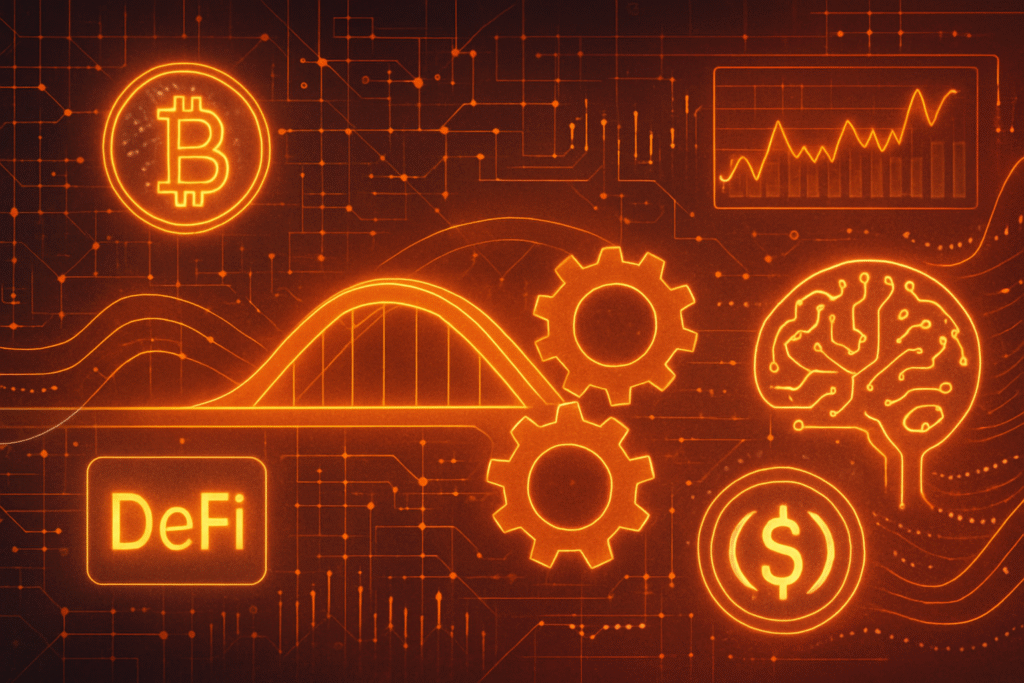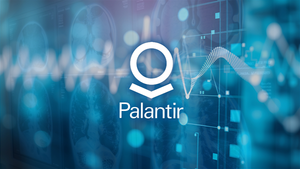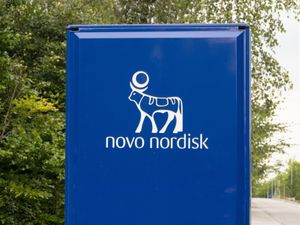
The decentralized finance (DeFi) landscape is undergoing a profound transformation, marked by a surge of innovations and evolving market dynamics from late 2024 through mid-2025. This period has seen DeFi protocols not only enhance their core functionalities but also aggressively bridge the chasm with traditional finance (TradFi), drawing unprecedented institutional interest. The tokenization of real-world assets (RWAs) has emerged as a pivotal catalyst, alongside advancements in Layer 2 scaling solutions, cross-chain interoperability, and the nascent integration of artificial intelligence (AI) into DeFi protocols. These developments, occurring amidst a fluctuating market and an increasingly clear regulatory environment, are fundamentally reshaping the crypto ecosystem, promising greater efficiency, accessibility, and a broader appeal for decentralized financial services.
While the early months of 2025 witnessed a notable decline in DeFi's Total Value Locked (TVL) due to broader economic uncertainties and market volatility, the underlying technological progress and the relentless pursuit of institutional integration signal a maturing ecosystem poised for its next growth phase. The strategic convergence of DeFi with TradFi, particularly through RWA tokenization, is seen as a critical step towards mainstream adoption, offering enhanced liquidity and fractional ownership for assets previously confined to traditional markets. This ongoing evolution is not merely about technological upgrades; it's about building a more robust, scalable, and interconnected financial future that could redefine global finance.
Market Impact and Price Action
The period spanning late 2024 and early to mid-2025 presented a mixed bag for the DeFi market, characterized by significant TVL fluctuations alongside robust growth in specific sectors. Following a peak in 2024, DeFi's total value locked (TVL) experienced a notable downturn in the first three months of 2025, dropping from an estimated $214 billion at the start of the year to $156 billion by March, a 27% decline. This contraction, however, followed a substantial increase from $137 billion in December 2024, indicating inherent volatility influenced by macroeconomic factors, market sentiment, and security incidents. Despite this dip, the number of unique DeFi users continued its upward trajectory, reaching 151 million by the close of 2024, underscoring sustained user interest despite value fluctuations.
Decentralized exchanges (DEXs) demonstrated remarkable resilience and growth, recording record trading volumes in late 2024 and early 2025. This surge was partly fueled by speculative activity surrounding meme coins, highlighting the speculative yet highly liquid nature of the DeFi trading environment. Derivative DEX trading also experienced explosive growth, reflecting a maturing market with sophisticated financial instruments gaining traction. While specific price movements for individual tokens like Uniswap (UNI), Aave (AAVE), Chainlink (LINK), and Maker (MKR) would require a deeper, real-time analysis, the overall market trend suggests that tokens associated with robust Layer 2 solutions, RWA tokenization platforms, and established DEXs likely maintained stronger support levels or experienced quicker recoveries following market corrections.
The increasing institutional interest, particularly in RWA tokenization, also introduced new dynamics. Projects facilitating the tokenization of assets like U.S. Treasury debt and private credit saw significant capital inflows, with the RWA market surging from $8.6 billion to over $23 billion in 2025. The success of BlackRock's (NYSE: BLK) BUIDL tokenized Treasury fund exemplified this trend, creating a tangible link between traditional financial products and DeFi protocols. This institutional embrace, while still awaiting clearer legal enforceability, suggests a fundamental shift that could stabilize DeFi markets in the long term by introducing more predictable capital and reducing reliance on purely speculative flows, potentially setting new support levels for key DeFi assets.
Community and Ecosystem Response
The crypto community's response to these evolving DeFi trends has been largely enthusiastic, albeit with a pragmatic understanding of the challenges ahead. Social media platforms like Crypto Twitter and Reddit have buzzed with discussions surrounding the promise of RWA tokenization, particularly its potential to unlock trillions in value and bridge the gap between traditional and decentralized finance. The entry of major financial players like BlackRock has been met with a mix of excitement and cautious optimism, with many influencers hailing it as a validation of DeFi's long-term vision, while others emphasize the need for continued decentralization and censorship resistance.
Crypto thought leaders have lauded the advancements in Layer 2 scaling solutions, such as Arbitrum (COIN: ARB) and zkSync, for their crucial role in enhancing user experience by significantly reducing transaction costs and increasing throughput. The growing Total Value Locked (TVL) on these L2s, with Coinbase's (NASDAQ: COIN) Base leading with approximately $3.4 billion, is seen as a strong indicator of developer and user confidence. Discussions also frequently revolve around cross-chain interoperability, with protocols like LayerZero and Chainlink (COIN: LINK) CCIP being highlighted as essential infrastructure for a truly interconnected blockchain ecosystem. The integration of AI into DeFi (DeFAI) has sparked considerable interest, with the community envisioning more efficient, automated, and intelligent protocols.
The broader ecosystem has responded by adapting and building upon these innovations. Existing DeFi protocols are exploring RWA integrations, while new projects are emerging to capitalize on the demand for tokenized assets and AI-driven financial services. NFT projects and Web3 applications are also benefiting from enhanced scalability and interoperability, enabling richer user experiences and more complex functionalities. However, the community remains vigilant regarding regulatory developments, particularly the ongoing tension between compliance requirements (like KYC/AML) and the core tenets of decentralization and privacy. While regulations like the EU's MiCA are seen as providing much-needed clarity, concerns persist about their potential impact on privacy-focused tokens and the open nature of DeFi.
What's Next for Crypto
The current trajectory of DeFi innovations and market trends points towards a future where decentralized finance is increasingly intertwined with traditional financial systems, driven by continued technological maturation and regulatory clarity. In the short term, we can anticipate a sustained focus on the expansion of Real-World Asset (RWA) tokenization, with more diverse asset classes making their way onto the blockchain. The success of early RWA projects is likely to attract further institutional capital, catalyzing the development of more sophisticated infrastructure for permissioned DeFi lending and borrowing. Layer 2 solutions will continue to be paramount, with ongoing competition and innovation aimed at further reducing costs and increasing transaction speeds, making DeFi more accessible to a global user base.
Long-term implications suggest that DeFi could become a fundamental layer of the global financial system. The convergence of AI with DeFi (DeFAI) is a nascent but powerful trend that could revolutionize automated market making, risk management, and personalized financial services, leading to unprecedented efficiency and customization. Potential catalysts to watch include further regulatory clarity in major jurisdictions, especially regarding the legal enforceability of smart contracts and digital assets, which would significantly de-risk institutional participation. The potential approval of more spot ETFs beyond Bitcoin, particularly for Ethereum, could also unlock substantial capital inflows into the broader crypto ecosystem, benefiting DeFi protocols.
Strategic considerations for projects and investors will revolve around adaptability and compliance. Projects must navigate the evolving regulatory landscape while maintaining their decentralized ethos, potentially through privacy-enhancing technologies like zero-knowledge proofs for KYC. Investors should monitor projects with strong fundamentals in RWA tokenization, robust Layer 2 integrations, and those actively developing AI-powered solutions. Possible scenarios range from a continued, albeit volatile, bull market driven by institutional adoption and technological breakthroughs, to a more cautious growth phase if regulatory hurdles or security incidents persist. The likelihood of a sustained trend towards greater institutional integration and RWA tokenization appears high, as the efficiency and transparency benefits are increasingly recognized by traditional finance.
Bottom Line
The current wave of innovation in Decentralized Finance, particularly the burgeoning Real-World Asset (RWA) tokenization trend and the accelerating institutional adoption, signifies a pivotal moment for the crypto ecosystem. For crypto investors and enthusiasts, the key takeaway is the maturation of DeFi beyond its early, speculative phase into a more robust and integrated financial paradigm. The growing convergence with traditional finance, facilitated by tokenized assets and improved scalability through Layer 2 solutions, suggests a future where DeFi plays a significant role in global finance.
The long-term significance of these developments lies in their potential to democratize access to financial services, enhance transparency, and unlock unprecedented liquidity by bringing illiquid assets onto the blockchain. While the DeFi market experienced some TVL fluctuations in early 2025, the underlying user growth and technological advancements, coupled with increasing institutional interest, underscore a resilient and evolving sector. The ongoing efforts to integrate AI into DeFi and improve cross-chain interoperability further solidify its foundation for sustainable growth and innovation.
As we move forward from October 2025, important metrics to monitor include the continued growth in the RWA tokenization market, the TVL on various Layer 2 solutions, and the capital inflows from institutional players. Investors should also pay close attention to regulatory updates, particularly those offering clarity on digital asset classification and smart contract enforceability. The successful implementation of decentralized identity solutions and privacy-preserving compliance mechanisms will be crucial for balancing regulatory demands with DeFi's core principles. The journey towards mainstream crypto adoption is being paved by these innovations, making DeFi an indispensable component of the financial future.
This article is for informational purposes only and does not constitute financial or investment advice. Cryptocurrency investments carry significant risk.







